Ojai’s Early Morning Pink Moment

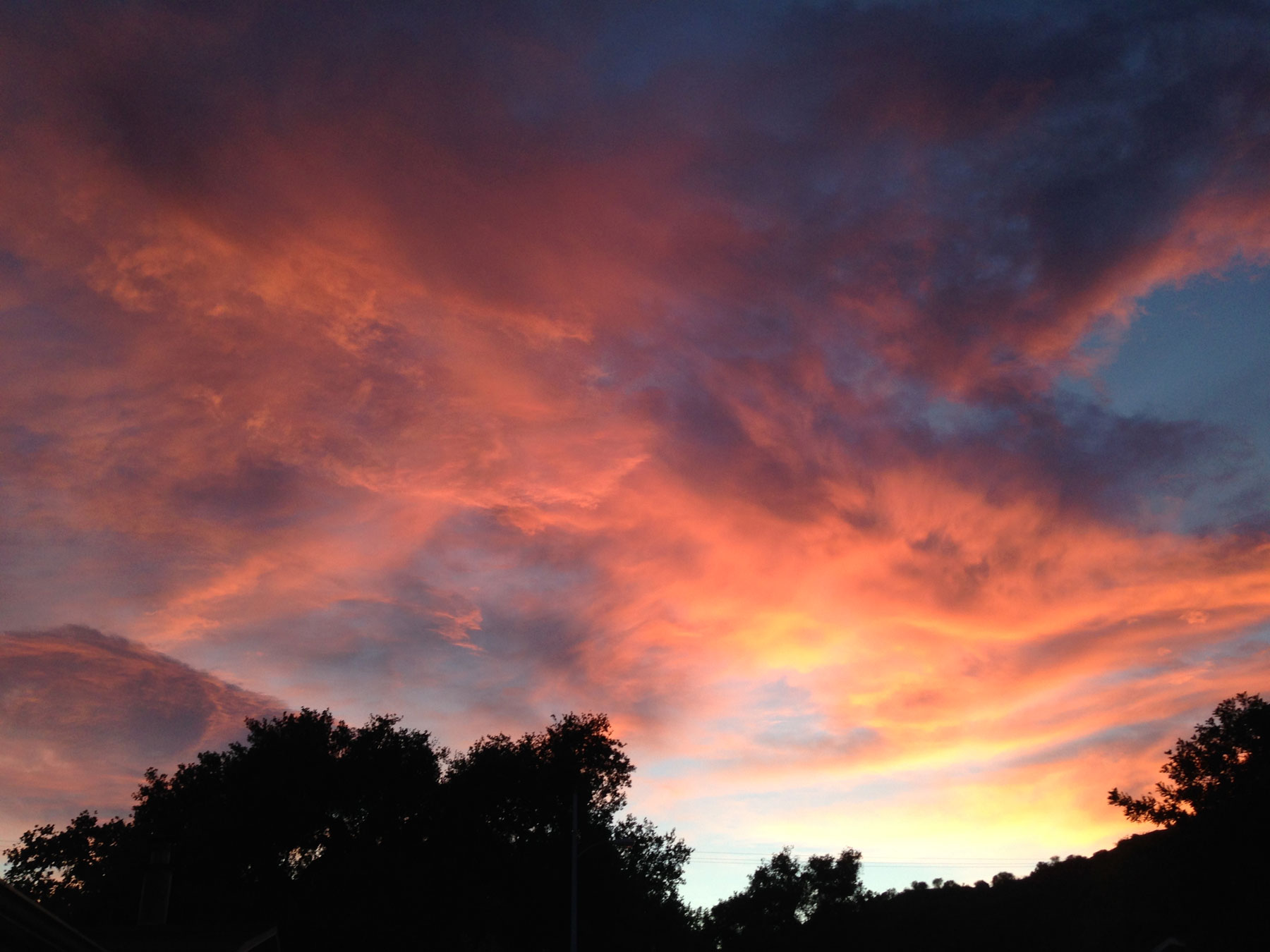
Guest Blog by Scott Eicher
I have been an early riser for most of my life. There is a certain serenity during the few minutes between first light and the time the Ojai foothills are fully lit by the sun. My viewpoint each morning is from Sarzotti Park as I walk with my dogs. The best colors are visible from early spring to early fall, when the earth’s tilt returns to its warmer weather axis. This light show is the evening Pink Moment in reverse.
The air is still and the only sound is the resident hawk declaring his territory from the top of a eucalyptus tree. At a few places in the park, you can see both the sky and the foothills above Grand Avenue and mountains of the Wills Canyon/Rice Canyon ridge line and escarpment toward Meiners Oaks, and into the far reaches of Matilija Canyon.
Welcome to our New Media Partners
The Ojai Music Festival is made possible because of the support and enthusiasm of others, from the artists and behind-the-scenes team, donors and volunteers, to corporate sponsors and media partners. This year, we welcome some new members to our growing Festival community!
![]() Southern California Public Radio (SCPR) is a member-supported public media network that operates 89.3 KPCC-FM in Los Angeles and Orange County, 89.1 KUOR-FM in the Inland Empire and 90.3 KVLA in the Coachella Valley.
Southern California Public Radio (SCPR) is a member-supported public media network that operates 89.3 KPCC-FM in Los Angeles and Orange County, 89.1 KUOR-FM in the Inland Empire and 90.3 KVLA in the Coachella Valley.
 Edible Ojai & Ventura County is an award-winning quarterly magazine which promotes the abundance of local foods, season by season – celebrating small family farmers, farmers market vendors and local chefs for their dedication to producing the highest quality, organic, fresh and seasonal foods. Edible Ojai & Ventura County serves all of Ventura County, an agriculturally rich area within California’s Central Coast region.
Edible Ojai & Ventura County is an award-winning quarterly magazine which promotes the abundance of local foods, season by season – celebrating small family farmers, farmers market vendors and local chefs for their dedication to producing the highest quality, organic, fresh and seasonal foods. Edible Ojai & Ventura County serves all of Ventura County, an agriculturally rich area within California’s Central Coast region.
 LA Yoga Ayurveda and Health Magazine is a resource for the vibrant Yoga community of Southern California. In print, in the digital edition, online and in free weekly email newsletter, La Yoga publishes inspirational stories connecting Yoga, the people who practice, and what it means in our lives in the modern world.
LA Yoga Ayurveda and Health Magazine is a resource for the vibrant Yoga community of Southern California. In print, in the digital edition, online and in free weekly email newsletter, La Yoga publishes inspirational stories connecting Yoga, the people who practice, and what it means in our lives in the modern world.
Many thanks to all our media partners and sponsors. Read more here >>
Watch Jeremy Denk and Tom Morris Discuss ‘The Classical Style’

The idea of ‘The Classical Style’ opera began when Festival Artistic Director Thomas W. Morris approached Jeremy Denk to be the 2014 Music Director. Over the months, the idea was refined and collaborators were added – watch the two videos below recorded in 2013, documenting some of the early ideas behind the project:
6 Ways to Get Lost In Ojai…
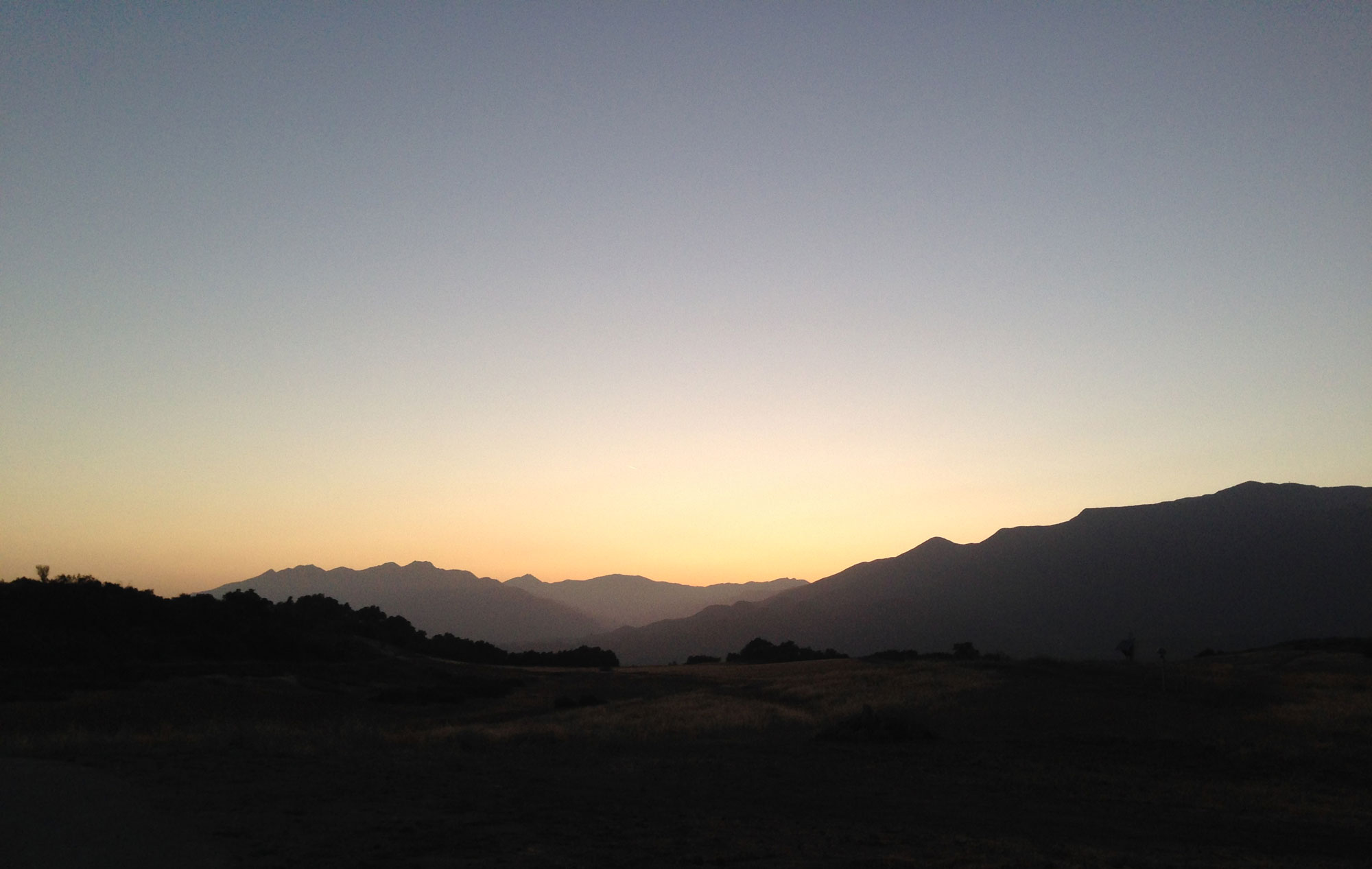
We always love sharing Ojai activities with Festival patrons including new hiking trails to discover. Read Ojai Quarterly Editor Bret Bradigan’s recent article from the winter issue.
1. Shelf Road
Directions: From Ojai Avenue, head north on Signal Street until it ends. Length: 3.5 miles return trip. Difficulty: Easy
It takes about an hour at a brisk pace to walk the length of the trail and back between the trailheads at either North Signal Street or Gridley Road. This hike is perfect for visitors or residents to get “ the lay of the land” in Ojai. It is also one of the most “dog friendly” walks around.
2. Ventura River Bottom Trails
Directions: From Highway 150, there’s a trailhead just east of the Ventura River bridge. From South Rice Road, there’s a trailhead just north of the intersection with Lomita Road. Also from South Rice, take a right on Meyer Road to the Oso Trailhead. Length: Varies. Difficulty: Easy to Moderate.
Three trailheads lead you into the Ojai Valley Land Conservancy’s 1,600-acre Ventura River Preserve. This three-mile stretch of the Ventura River offers a spectacular glimpse into old-growth oak canopy, splendid vistas from rocky ridgelines, deep swimming holes, lush fern grottoes, rare wildflowers and many miles of trails to choose from.
3. Pratt Trail
Directions: From Ojai Avenue, turn north on Signal Street and drive about 1.2 miles until you see the Forest Service sign on the left. The trailhead is a further half-mile. Length: 4.4 miles to Nordhoff Ridge. Difficulty: Moderate to Strenuous.
The Pratt Trail criss-crosses a seasonal stream through the backyards of private properties before opening onto a natural bowl formed by the slope of Nordhoff Ridge. Follow the signs through about two miles of dry and dusty switchbacks until you reach the ridgeline. From there, it’s another two steep, dusty miles to Nordhoff Peak, 4,426 feet above sea level.
BRAVO! Spotlight: Jacob Scesney
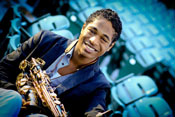
Each February brings a BRAVO! tradition – the annual Imagine Concert. Last week, over 1,000 local 4th to 6th grade students from eight schools attended a live performance by their older peers and professional area artists, including performances by the Matilija Jr. High strings program and a special preview of Nordhoff High School’s upcoming musical, West Side Story. Also performing were Artist-In-Residence Rebecca Comerford, local musician Jimmy Calire and special guest (and BRAVO! alum), Jacob Scesney.
Multi-instrumentalist Jacob grew up in Ojai playing the saxophone and participating in school music programs and BRAVO! workshops from elementary school, through his time at Matilija and at Nordhoff (where he won several festival awards for outstanding soloist), before transferring to the Idyllwild Arts Academy to complete his high school education. In recent years, Jacob’s burgeoning career has taken him far beyond the Ojai Valley and included tours with Casey Abrams, performances with Tim Ries, Bernie Dresel, Christian Scott, Robben Ford, and Andrew Gouche (among others), the world premiere of Rufus Reid’s Mass Transit at Disney Hall’s Redcat, and even appearances on the hit TV show Glee. He currently studies at California State University Northridge, where he was named the youngest lead alto in the history of the university’s Jazz A Band.
Watch Jacob and Jimmy perform at the Imagine concert last week:
Jacob has fond memories of his time in Ojai and recently wrote on the important role BRAVO! played in his musical training. He writes, “The BRAVO! Program … helped forge an attitude of consistency that has helped carry me through many circumstances. These programs are instrumental to the mindset needed to be a present active professional, in whatever field.”
We’re thrilled to have had Jacob back in Ojai to share his talents with another generation of Ojai’s students. It’s not that long ago that he sat where they were, and we can’t wait to see where the next years take him.
Learn more about the Festival’s BRAVO! music education and community programs >>
Help the Festival continue bringing music to public school children. Donate here >>
Guarantee Lodging for the 2014 Festival by Booking Early

Lodging in Ojai and the surrounding areas tends to fill up before June arrives – guarantee a room by booking early for Festival weekend.
View a list of area lodging >>
To learn more or for recommendations, call the box office at 805 646 2053 or our complimentary Festival concierge Sheila Cohn, 805 646 2094 ext 110 / [email protected].
Back To School at the Festival

The month of September means many things here at the Festival – planning for the next year is starting to get underway, staff have returned from their vacations, summer interns are back to school, and, of course, the BRAVO! music education program is beginning to get underway.
Each year, BRAVO! provides free, integrated music instruction to Ojai’s public school students and those in two nearby Ventura County schools. Students are led in a series of workshops by BRAVO!’s artists-in-residence (local professional musicians). These range from lessons in world music, to k-1 music eduction, to opera. To see a complete list of BRAVO!’s offerings, click here. Education Through Music (ETM) workshops will start shortly in K-1 classrooms throughout the district…stay tuned for photos and updates!
We’re excited to expand BRAVO!’s community percussion workshops this year to include Ojai’s older citizens. We’re bringing percussion instruments and special group activities to Ojai’s assisted living and continuing care facilities so that Ojai residents of all ages can benefit from participating in music making. We would like to recognize the City of Ojai Arts Commission and the Ojai Rotary Club for their generous support of the community percussion workshops.
If you’re here in Ojai, you’ll know that Ojai Day is just around the corner. Come by our Instrument Petting Zoo on October 19th and try out a new instrument – or reconnect with an old one!
‘Inuksuit’ in Your Living Room? Not as Far-fetched as You Think

If you were at the 2012 Ojai Music Festival, chances are you caught the West Coast premiere of John Luther Adams‘ all-embracing piece Inuksuit. The LA Times’ Mark Swed called the Ojai performance a “ritual hour of enthralling rumble and shimmer”.
We had several patrons ask us afterwards if there was a recording of Inuksuit available. Many thought it might be impossible – how could a recording capture the sheer physical sense of the piece? But now, the wait is over. Inuksuit’s first recording, produced by percussionist/composer Doug Perkins, will be released on October 29. Recorded in the forests of Guilford Sound, Vermont, the recoding uses a surround mix to better capture the full range the piece – and it sounds pretty good. Click here to listen to a preview >>
“Doug really created an ideal set of circumstances for us to make this the ‘official’ recording of Inuksuit,” Adams says. “It’s a beautiful sounding of the strong sense of community that has grown up around the piece. That’s something I wasn’t prepared for, and I’m glad to be able to give some of that back.”
We can’t wait for the final release. If there’s one thing we’ve learned about Inuksuit, it’s a different journey each time you hear it. So here’s to one more.
Click here to pre-order Inuksuit >>
From the Vault: Jeremy Denk’s Notes from the 2009 Festival on Bach’s Goldberg Variations
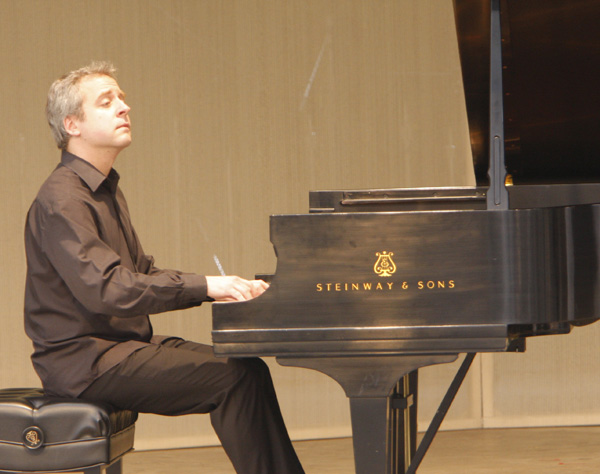
Jeremy Denk made his first appearance in Ojai at the 2009 Festival with Music Director eighth blackbird. The pianist was very thoughtful and helpful in sending over notes for his Saturday Morning Concert, which included Bach’s iconic work, Goldberg Variations (about to be released on Nonesuch Records). As we move forward Jeremy’s return to Ojai – this time as the 2014 Music Director – read about how he first explained this piece, which has become an significant part of his repertoire.

“I think the connection between the Goldbergs and the Ives First Sonata is … opposites attract? Beauty and the Beast? This program is a bit like a couple that you would never imagine would get together but, when you hook them up, they suddenly have a lot to say to each other. I love the idea–a kind of painterly contrast–of the luminous, serene Goldbergs against the dark, raucous Ives Sonata. An 18th-century German Lutheran and a 19th-century Connecticut farming family may not be all that far apart, in some sense: they’re both spartan and spiritual. One of my favorite parts of the Goldberg Variations is the concluding Quodlibet, where Bach takes two common tunes and superimposes them over the Goldberg harmonic ground: a masterstroke of composition, but also a wonderful joke combining high and low, the profound and profane. And what could be more Ivesian than that?
For me, the Goldberg Variations is a tripartite cosmos: a third of the variations are full of humorous keyboard virtuosity, another third are extraordinary canonic demonstrations, and another third are “character pieces,” which draw on the musical world around Bach, almost reproducing that world, like a mural. The Ives Sonata has interesting parallels to this: it has a big arching structure of three serious movements, flanking two down-and-dirty scherzos. The effect is that Ives journeys back and forth from the dark, wintry, severe character of his rural Connecticut family–with their plaintive hymns and ballads–to the totally different, citified world of ragtime, painting in wild contrasts a picture of Ives’s sprawling, uniquely American musical world.” – Jeremy Denk
Continue Your Festival Experience With OjaiU During the Summer

 This past May, over 240 Festival enthusiasts participated in our first OjaiU Online University. Through videos from guests instructors (including Mark Morris, Jeremy Denk, John Rockwell, and John Luther Adams) and “listen and do” activities, OjaiU students got a deeper understanding of Festival programming and the thinking that lies behind it.
This past May, over 240 Festival enthusiasts participated in our first OjaiU Online University. Through videos from guests instructors (including Mark Morris, Jeremy Denk, John Rockwell, and John Luther Adams) and “listen and do” activities, OjaiU students got a deeper understanding of Festival programming and the thinking that lies behind it.
If you missed the classes in May – it’s not too late! OjaiU classes are still available so that you can extend Festival experience through the summer.
View Our Must-Visit Ojai Destinations
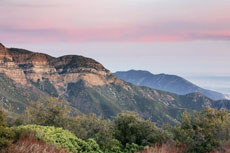
 The valley is full of eateries, shops and activities with their own distinctive “Ojai” flavor. Many are located downtown, while others are hidden away – and are always worth the drive!
The valley is full of eateries, shops and activities with their own distinctive “Ojai” flavor. Many are located downtown, while others are hidden away – and are always worth the drive!
Use our “Where To Go” guide to discover a few of the things to do while in town.
Restaurants here >>
Shops and services here >>
If you’re looking to get out for a hike, read our hiking guide >>
Complete 2013 Festival Reviews
DanceTabs
Mark Morris Dance Group at the Ojai Music Festival – California
Marina Harss
June 9, 2013
Mark Morris is halfway through his tenure as Music Director of the Ojai Music Festival (June 6-9). The festival elects a guest director each year; Morris is the first choreographer to get the job. The seemingly ubiquitous Morris has now taken to calling the current season “my festival”; he’s only half kidding. The centerpiece of the second evening (June 7) was a performance by the Mark Morris Dance Group – the only dance performance – at the outdoor Libbey Bowl, a fantastically pleasant amphitheatre set within a park in the center of bucolic Ojai. Pleasant, but not ideal for dance: the stage is trapezoidal, has no wings, and doesn’t provide ideal sight lines. But that’s what summer festivals are all about. It’s cool, the night air smells of flowers and the encroaching dusk bathes the proceedings in a lavender glow.
The focus this year is on American music, mostly by composers from the West Coast, and more specifically by composers connected to the Seattle-born Lou Harrison (1917-2003), an old friend of Morris’s whose music he has turned to again and again. Other recurring names are Henry Cowell and Charles Ives, with side excursions into the work of John Luther Adams, John Cage and Samuel Barber. Most of these composers are mainstays of the Mark Morris troupe. The evening was split into two halves, separated by a magical sunset performance of works for toy piano by Satie and John Cage (played by Yegor Shevtsov, a lanky dreamer).
‘Remembering Lou,’ by John Luther Adams
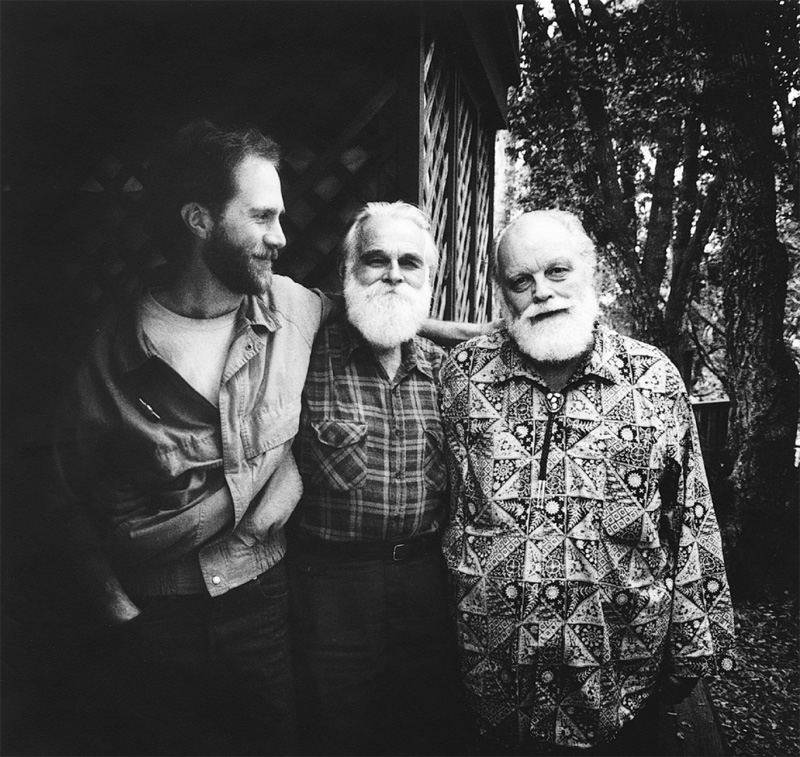
Shortly after Lou Harrison’s death, fellow composer and friend John Luther Adams wrote this remembrance in his honor.
The great redwood has fallen.
Light streams into the forest.
The sound will reverberate
for generations to come.
The passing of Lou Harrison marks the end of an era in American music that began with Charles Ives and continued on through Henry Cowell, Ruth Crawford Seeger, Harry Partch, Conlon Nancarrow, and John Cage.

The expressive range, diversity of media, prolific quantity, and consistent quality of Lou’s music are perhaps unequalled among recent composers. From heroically dissonant orchestral counterpoint to explosive percussive rhythms to ravishing, timeless music for gamelan, his body of work embraces most of the important currents in the music of our time.
Lou always fearlessly pursued his own way. While still a young man, he left the competitive careerism of New York City to make his home on the California coast. There, surrounded by the beauties of nature and the richness of Pacific cultures, he created his own uniquely personal world, grounded in his credo: “Cherish. Conserve. Consider. Create.”
As a teacher Lou introduced many young Western musicians to the music of other cultures, or as he called it, “the whole, wide, wonderful world of music.” His diminutive Music Primer remains a wellspring of creative wisdom about the life and the craft of a composer.
Through his wide-ranging friendships, Lou was a central figure, connecting five generations of musical independents. His spirit lives on in his music and through the gifts he gave to so many younger musicians. I feel blessed to have been among them.
Thirty years ago, as an aspiring young composer, I won second place in a composition contest. I was especially thrilled since one of the judges was Lou Harrison, whose music I very much admired. Emboldened, I made the pilgrimage to San Jose State University, where Lou was teaching at the time. I was delighted to find the man himself to be every bit as scintillating and engaging as his music.
From that day on, Lou was a generous mentor, an attentive friend, and an inspiring model to me, as he has been for many other younger composers. Lou always treated me with respect as a younger colleague. His matter-of-fact embrace of my aspirations removed any shred of doubt in my mind that I would make a life as a composer.
Lend a Hand! Volunteer at the 67th Festival in June!
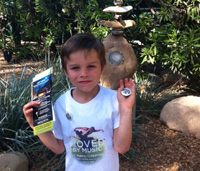
Volunteers play an important role at the Ojai Music Festival throughout the year, but during the four-day Festival, their participation grows ten-fold with close to 100 people lending a helping hand to ensure the Festival’s success.
Applications are now being accepted for the 67th Ojai Music Festival, June 6-9. Positions include ushering, backstage crew, venue set up, and merchandise. In addition, office assistance is needed prior to the Festival and during the weekend. Volunteers receive a free Festival shirt and complimentary lawn tickets based on the number of volunteered hours as a token of appreciation.
Celebrating its 67th season, the Ojai Music Festival, June 6-9 will explore the musical interests of its Music Director Mark Morris. The Festival will also feature the Mark Morris Dance Group and MMDG Music Ensemble, the American String Quartet, The Bad Plus, red fish blue fish, Gamelan Sari Raras, and many others.
Download a volunteer application here >>
Questions? Please call (805) 646-2094 ext. 116.
My Memories of Lou Harrison Part I
by Jain Fletcher
The Ojai Music Festival is fortunate to have amazing patrons who share their own personal experiences with music, from their past and present. Long-time patron, Jain Fletcher, kindly gave us a personal account of her friendship with composer Lou Harrison.
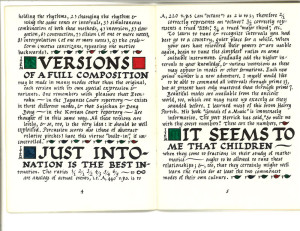
I entered San José State University (SJSU) in 1967 as a music major (flute). I was very fortunate to enter an environment consisting of a relatively young faculty of musicians who were energetic and capable of instituting and carrying out some really exciting musical initiatives. Although I took it all for granted at the time, in looking back, I have realized that the epitome of my music training and experiences took place in college. For everything that was good about the Music Department during my years at SJSU (1967 to 1979, from B.A. to M.A.), the greatest part was the benefit of having a sublime eminence on the faculty: Lou Harrison was on the staff as Composer-in-Residence.
When I first got to college, I never could have foreseen that I was going to have any personal interaction with Lou. What I did know, from the enthusiastic buzz about him, was that I wanted to experience as much as I could of what he had to offer. So, in those early days, I kept my ears and eyes open for news of concerts with his music, and then attended every one. I also took his survey course, “Music and World Cultures,” in my freshman year. Given that this course was open to all students there was no way it could have been as awesome as it would have been if it had been addressed to music majors or graduates. But think about it: a class on world music(!) from Lou Harrison!! Needless to say, it was a complete eye-opener. Sure, he knew his subject, but better yet, he was an excellent teacher. I had never heard anyone discourse so articulately and beautifully in- or outside a classroom. Because he was so passionate about this topic, it was also a difficult course to do well in. In the end, what he introduced in that class opened up a whole new world of music for me at a very impressionable time of my life.
My Memories of Lou Harrison Part II
Part II of My Memories of Lou Harrison by Jain Fletcher
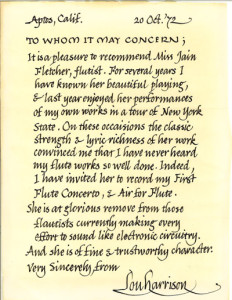
In my last year of school, I started trying to make plans to go to New York, but with my chronic lack of funds, my chances were not looking very promising. At around that same time, Lou told me he was being asked to make a tour of New York state with his small group (Bill Colvig and Richard Dee) and, since I was “going to New York anyway” he had some music for violin (ossia flute) and drone that he thought would be nice to have me play on the concerts. I could not imagine saying “no” to this unbelievable opportunity, so I happily agreed. To prepare for our tour, we spent at least 3 weekend days at Lou’s and Bill’s place in Cabrillo, practicing the music for the concert. After that, we would have a little dinner before I coaxed my ’56 VW back over the Santa Cruz mountains to San Jose.
Practicing for the concert was very special, indeed, but I treasure even more the chance I got to be with Lou and his friends in his and Bill’s very colorful and comfortable home. The most pleasant part of those dinners was the stories they would tell. My most vivid memory of those stories was this one time when Bill and Lou regaled me over dinner with their recent adventure at a local hardware store trying out various metallic canisters to be used as “drums” (such as galvanized steel garbage cans) or beaters (such as hammers and large bolts, etc.) for a piece they were going to be staging soon. I could not help imagining the look on other shoppers’ faces when they saw two men pulling several garbage can lids out into the aisles to test their sound qualities–all the while engaged in a spirited discussion of their relative merits. When I registered both my delight and amazement at this story, they assured me that they had long since managed to garner the proprietor’s “blessing” for this activity. I also remember how much Lou shared of himself at his house. I remember asking one evening about how he got such beautiful handwriting. He not only told me how he got his start at calligraphy (which I have managed to forget after all these years), but he also gave me my first impromptu calligraphy “lesson”. He wanted to show me how “easy” it was to make the strokes, first by showing me, then by letting me try. My results could not have been much more than scribbles at the time, but his lesson “took”, because it gave me the courage to continue. About three years later (when I was working in a book and art supplies store), I had my first real chance to learn some calligraphy–and I have practiced it since. Not to either Lou’s or Ron’s level, mind you, but it pleases me anyway…
Festival program book opportunities for Ojai businesses and beyond

A significant part of the Ojai Music Festival’s legacy and ‘aura’ is its idyllic setting. When When John Bauer first laid eyes on Ojai some 67 years ago, he knew that the Ojai Valley would be the perfect location for an emerging festival for the arts.
To this day, Ojai continues to charm not only audience members, but Festival artists who equally fall in love with the intimate, outdoor setting of the Libbey Bowl as well as the eclectic small town and bucolic surroundings.
Indeed, the Festival is fortunate to have a backyard of beauty, plus a very supportive community from the residents to the businesses.
The many businesses – from lodging, restaurants and art galleries to shops, spas and coffee shops, participate in many ways including advertising in the hefty program book, written eloquently by musicologist Christopher Hailey. Although the Festival has other ad partners outside of the Ojai community, it is the local businesses that support the must-read program book that patrons read fiendishly during the Festival and keep even after the Festival as a memento!
View our list of local eateries here > >
Find things to do in Ojai during Festival or year round >>
Are you a business looking to “win over” a highly –desirable group of arts patrons?
View our media kit, which includes rates and audience demographics >>
Ojai’s Crown Jewel: Ojai Valley Inn & Spa
 905 Country Club Rd
905 Country Club Rd
Phone: 805 646 1111
Website: OjaiResort.com
Often cited as one of the top resorts in the country, the famed Ojai Valley Inn & Spa offers a complete vacation experience, featuring luxurious rooms, extensive spa services, a variety of delicious restaurants, and a picturesque golf course, all surrounded by stunning views of the Topa Topa mountains and Ojai’s pink moment. Conveniently located a 10 minute walk from Libbey Bowl (or an even shorter bike ride), the Ojai Valley Inn is connected to the Libbey Bowl and downtown Ojai by the Ojai Valley Trail.
Festival patrons receive as special room rate at the Inn. Click here to book online or use group code MUSIC when making your reservation.
The Oakridge Inn

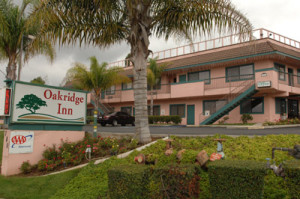 780 North Ventura Avenue
780 North Ventura Avenue
Phone: 805 649 4018
Website: Oakridgeinn.com
If you’re looking for another lodging alternative in the Ojai Valley during Festival weekend, The Oakridge Inn is just the place for you. The Oakridge Inn is located in Oak View, a small Ojai Valley community nestled among spreading oaks, surrounded by tree-covered mountains, beautiful parks, museums, historical sites, and recreational facilities.
[nggallery id=1 template=caption]
Click on a photo to view or download a high-res version using the links above.
Contact Gina Gutierrez or call 805 646 2094 ext. 104 for additional images.
Inuksuit, John Luther Adams, and Ojai
Just before the new year, influential music critic Alex Ross released several end of year lists. He named the Festival’s own Thomas Morris as one of the Persons of the Year, and released his list of the greatest performances of 2011. One of the selected highlights was the performance of John Luther Adams’ “Inuksuit” at the Park Avenue Armory in New York. Written for Steve Schick, Inuksuit–the title is derived from the stone cairns used by the indigenous peoples of the Arctic–is an arresting piece for 9-99 percussion performers who are located throughout a large space (it was originally intended to be performed outdoors), allowing audience members to remain stationary or to move through the performers at will. Watch excerpts from the Armory performance.
Lucky for us, we don’t have to travel to New York to witness Inuksuit. The 2012 Festival will kick off with the piece’s West Coast premiere on Thursday Evening at 5pm. The premiere will be a free community performance featuring 48 percussionists led by Steven Schick, including professional musicians, music students from Southern California universities and colleges, and local musicians from Ojai. They will be placed throughout Libbey Park and Bowl to create a truly unique, interactive musical experience.
Luther Adams is no stranger to such intersections and interactions between space and sound. Described by the New Yorker as “one of the most original musical thinkers of the 21st century,” his works take the vast natural landscapes and the indigenous cultures of his adopted Alaska as their inspiration. Spurred by his deep interest in environmental conservation, Luther Adams’ compositions create a bridge between human experience and the natural world, bringing audiences greater awareness and a heightened connection with nature. Many of his works take their material directly from nature itself. In The Place Where You Go To Listen, for instance, Luther Adams used seismological readings and geophysical data in composing.
In many ways Luther Adams’ compositions are a perfect fit for the outdoor setting of Libbey Bowl, and the 2012 Festival will feature several of his works. After Inuksuit on Thursday, the evening concert will also feature Red Arc/Blue Veil, performed by Marc-André Hamelin and Steve Schick. Luther Adams’ work returns on Sunday night, where Leif Ove Andsnes will join Hamelin to perform Dark Waves. Click here to listen to a preview.
This year’s Festival is promising to be a truly unique intersection of music, place, and idea. If you have not yet purchased your tickets for this year’s Festival, you can do so online, or by calling 805.646.2053.
For more information on John Luther Adams and to read his writing on music, composition, and the environment, visit his website.
Confessions of a Teenage ‘Metro Gnome’
György Ligeti’s fluxus score to ‘Poème Symphonique’ spends little time discussing the performance of the work itself. Instead, he addresses a more pressing matter: acquiring 100 metronomes. Music stores, newspaper advertisements, and Maecenas are some of the sources that Ligeti encourages to bribe with program note recognition etc. If a rich patron were to simply buy Ligeti 100 metronomes, the piece would be “dedicated to him alone.”
When Artistic Director Tom Morris pitched the project to me in 2007, he lowered the cone of silence. “We’ve located the metronomes, but now I need you to assemble a team to set them off at the opening night concert.” Six cardboard boxes of time-keeping devices had just arrived from a performance of ‘Poème Symphonique’ in Austin, Texas. We were armed and ready.
Ten tables with ten metronomes each ringed the bowl at the opening night concert. Pianists Amy Williams and Helena Bugallo gave the signal to my team and the clicking commenced. While the sound of one metronome is regular and percussive, multiplied one hundred times, the result is quite different—imagine rain on a tin roof. But one by one, the upward pendulums froze until the heroic last stand of the final metronome. Beats away from death, the wooden pyramid hypnotized the audience. A long pause was observed when the last click sounded.
Albert Behar is a composer and past intern at the Ojai Music Festival. He is currently running around Paris with an accordion in search of jazz manouche. To find out more about his French alter-ego visit: http://accordion.albertbehar.com
